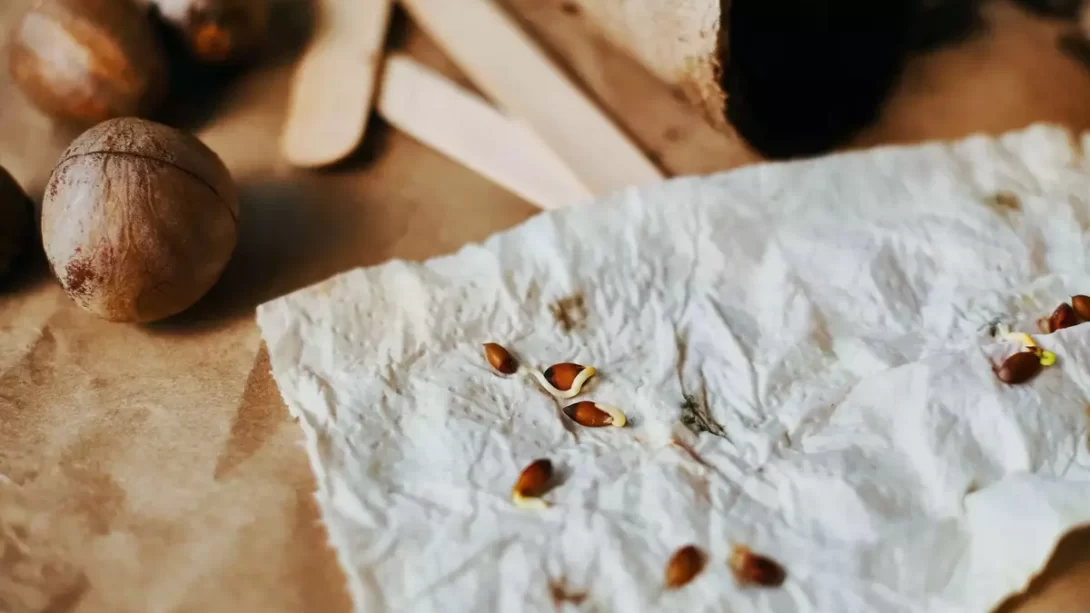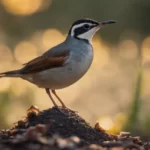Germinating seeds in a paper towel is a popular method for gardeners, offering a controlled environment to kick-start the growth process. While this method has many benefits, knowing the right time to transplant these delicate seedlings into soil is crucial for their continued growth and health. This article aims to guide gardeners on the best practices for transplanting seeds that have started their journey in a paper towel.
The Paper Towel Germination Method
The paper towel germination method involves placing seeds between moist paper towels and then into a plastic bag or container to create a mini greenhouse effect. This method is favored for several reasons:
- Quick Germination: Seeds often germinate faster in a paper towel due to consistent moisture and temperature.
- Easy Monitoring: Gardeners can easily check the progress of the seeds without disturbing them.
- Selective Planting: It allows for the selection of the strongest seedlings for planting, ensuring a higher success rate.
Signs of Readiness for Transplantation
Transplanting seeds at the right time is key. The following signs indicate that the seeds are ready to move from the paper towel to soil:
- Root Development: Look for the emergence of a small root or a few roots. This is a sign that the seed is ready to be planted in soil. The roots should be sturdy but not too long; overly long roots can become tangled and are more prone to damage during transplanting.
- Shoot Appearance: The appearance of a small shoot or sprout from the seed is another sign of readiness. The shoot should be green and healthy-looking.
Preparing for Transplantation
Before moving the seedlings to soil, it’s important to prepare adequately:
- Soil Preparation: Choose a high-quality potting mix that is appropriate for the type of seeds you are planting. The soil should be loose, well-draining, and rich in organic matter.
- Container Selection: If transplanting into pots, ensure they have adequate drainage holes. For direct garden planting, prepare the soil by loosening it and enriching it with compost if needed.
The Transplanting Process
Transplanting seedlings from a paper towel to soil is a delicate process that requires gentle handling. Here’s how to do it:
- Gentle Separation: Carefully separate the seedlings from the paper towel. If the roots have grown into the towel, moisten it to help release the roots without damage.
- Creating a Planting Hole: Make a small hole in the soil for each seedling. The hole should be deep enough to accommodate the roots without bending or crowding them.
- Transplanting the Seedling: Using a spoon or a similar tool, gently transfer the seedling into the hole. Position the seedling so that the base of the shoot is at soil level. Gently firm the soil around the roots.
- Watering After Transplanting: Water the seedlings gently but thoroughly after transplanting. Use a watering can with a fine spray to avoid displacing the soil or damaging the delicate seedlings.
Aftercare for Transplanted Seedlings
Once the seedlings are in the soil, they require proper care to thrive:
- Watering: Keep the soil consistently moist but not waterlogged. Seedlings require a lot of water, but too much can lead to root rot.
- Light Requirements: Provide plenty of indirect sunlight. If growing indoors, a south-facing window or grow light can offer the necessary light exposure.
- Temperature Control: Maintain a stable temperature. Most seedlings prefer a warm environment, so avoid placing them in areas with cold drafts or temperature fluctuations.
- Protection: In outdoor settings, protect the seedlings from harsh elements like strong winds or direct, hot sunlight. A protective cover or partial shade can be beneficial.
Timing Considerations Based on Plant Type
The ideal time to transplant seedlings can vary depending on the type of plant. Here are some general guidelines for different categories:
- Vegetables: Many vegetable seedlings, like tomatoes and peppers, should be transplanted when they have developed 2-3 true leaves. This typically occurs a few weeks after germination.
- Flowers: Flowering plants can often be transplanted a bit earlier, as soon as they have their first set of true leaves, provided they are sturdy enough to handle the move.
- Herbs: Herb seedlings, like basil or cilantro, are usually ready to transplant when they are 2-3 inches tall and have a set of true leaves.
Common Issues and Solutions Post-Transplant
After transplanting, seedlings may face several challenges as they adjust to their new environment:
- Wilting: This is a common response to transplant shock. Ensure the seedlings are adequately watered and protected from strong sunlight or winds.
- Yellowing Leaves: This can be caused by overwatering or a lack of nutrients. Adjust watering habits and consider a gentle, balanced fertilizer if necessary.
- Stunted Growth: If growth seems slow, check if the plant has enough light and the soil is of good quality. Sometimes, a mild fertilizer can help.
Conclusion
Transplanting seedlings from paper towels into soil is a rewarding step in the gardening process, allowing for greater control over the early stages of plant growth. By understanding the needs of different plant types and providing the right aftercare, gardeners can successfully nurture their seedlings into robust, healthy plants.
The key to successful transplantation lies in gentle handling during the move, proper watering, light management, and protecting the young plants from environmental stress. With patience and attention to detail, even novice gardeners can master this method, leading to a thriving and productive garden.
In conclusion, the paper towel germination method, followed by careful transplantation, offers an effective way to start a wide variety of plants. By following these guidelines, gardeners can enjoy the satisfaction of seeing their plants grow from tiny seeds into flourishing additions to their gardens.



